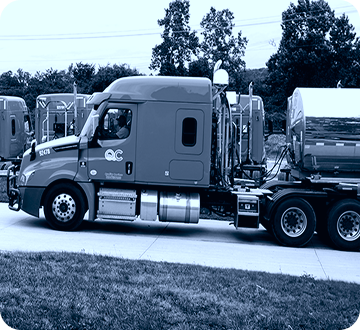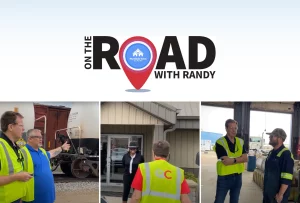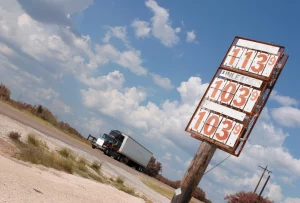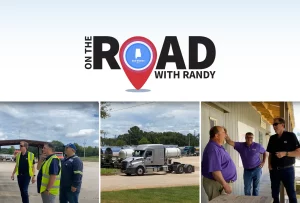Fleet owners are integral to smoothly transporting goods and services across diverse industries. But what exactly does it mean to be a fleet owner?
This blog aims to discuss the intricacies of fleet ownership, shedding light on the requirements and steps involved. Whether you’re a budding entrepreneur looking to enter the transportation industry or a seasoned professional seeking insights into fleet management, this guide will provide valuable insights into the world of fleet ownership. Join us as we explore the fundamentals, regulatory considerations, and practical steps to becoming a successful fleet owner in today’s ever-evolving business environment.
What is a Fleet Owner?
A fleet owner is an individual or entity that owns and manages a group of vehicles, known as a fleet, typically for commercial purposes. These vehicles can include trucks, vans, buses, or any other vehicle used for transportation or delivery services. Fleet owners are responsible for acquiring, maintaining, and operating their vehicles to ensure efficient and safe transportation of goods or passengers. They may either directly manage the vehicles or lease them to drivers or companies. Fleet owners are crucial in various industries, including logistics, transportation, delivery services, and public transportation.
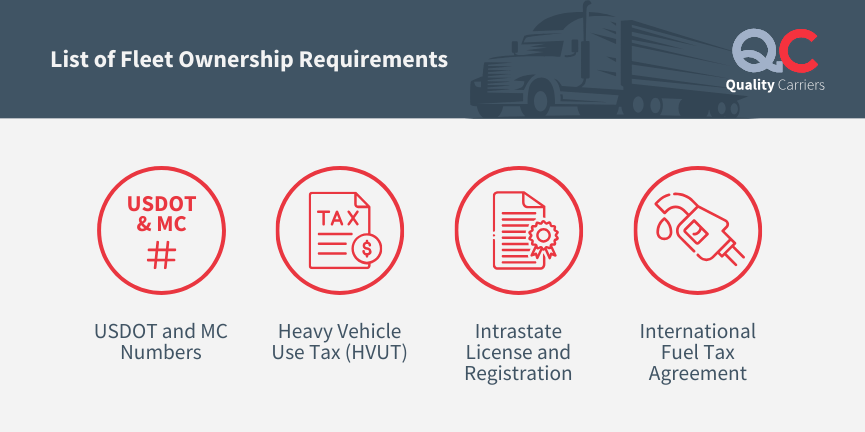
List of Fleet Ownership Requirements
1. USDOT and MC Numbers
The USDOT number is a distinctive identifier designated for commercial vehicles engaged in interstate commerce across the United States. Vehicles transporting passengers or hauling cargo across state lines must meet specific weight or capacity thresholds. The MC (Motor Carrier) number is an additional identifier the Federal Motor Carrier Safety Administration issued for interstate carriers engaging in regulated transportation activities. These numbers are essential for regulatory compliance, safety monitoring, and enforcement.
2. Heavy Vehicle Use Tax (HVUT)
The HVUT is a tax imposed on heavy vehicles operating on public roads with a gross weight of 55,000 pounds or more. Fleet owners must file Form 2290 with the Internal Revenue Service (IRS) annually and pay the HVUT if their vehicles meet the weight requirements. The tax revenue collected funds highway construction and maintenance projects across the United States. Compliance with HVUT regulations is mandatory for fleet owners to operate their vehicles in public and avoid penalties or fines for non-compliance.
3. Intrastate License and Registration
Intrastate license and registration refer to the permits and documentation required for operating commercial vehicles within a single state. While USDOT and MC numbers are necessary for interstate transportation, intrastate carriers must comply with state-specific regulations governing vehicle registration, licensing, and permitting. Each state has its own set of requirements for intrastate carriers, including registration fees, vehicle inspections, and compliance with state transportation laws. Fleet owners operating exclusively within one state must obtain the appropriate intrastate licenses and registrations to ensure legal operation and avoid penalties for non-compliance.
4. International Fuel Agreement
An International Fuel Tax Agreement (IFTA) is a pact between the contiguous United States and Canadian provinces. This simplifies the process of reporting and paying fuel taxes for motor carriers that traverse multiple jurisdictions. Fleet owners with vehicles that travel across state or international borders must participate in the IFTA program and obtain an IFTA license.
This license enables carriers to report and remit fuel taxes based on the miles traveled, eliminating the need to obtain individual fuel permits for each state or province. Compliance with IFTA regulations streamlines fuel tax reporting, reduces administrative burdens, and ensures equitable distribution of fuel tax revenues among participating jurisdictions.
6 Steps in Becoming a Fleet Owner
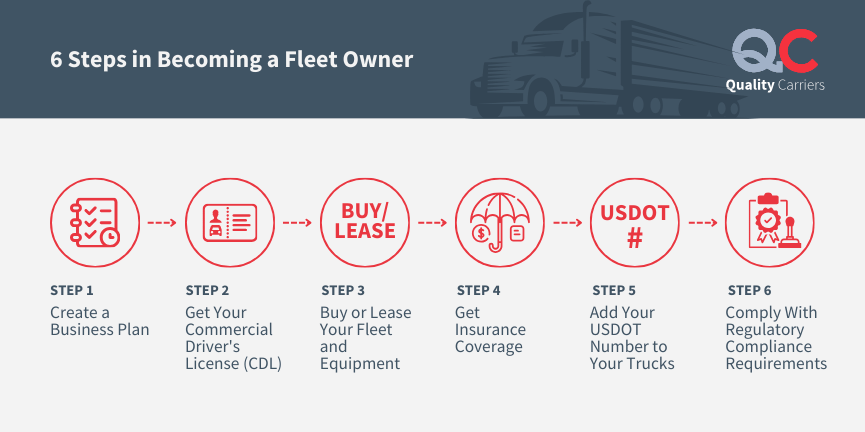
Step #1: Create a Business Plan
Creating a comprehensive business plan is the foundational step in becoming a fleet owner. This entails thoroughly analyzing the transportation industry, identifying market opportunities, and defining your business goals and objectives. Your business plan should include your company’s mission and vision, target market, competitive analysis, marketing strategies, operational plans, financial projections, and contingency measures. A well-crafted business plan serves as a roadmap for your fleet ownership journey and helps secure financing, attract investors, and guide strategic decision-making as your business grows.
Step #2: Get Your Commercial Driver’s License (CDL)
Obtaining a Commercial Driver’s License (CDL) is pivotal to becoming a fleet owner. This license is essential for operating commercial vehicles legally and safely. The process involves several key stages to ensure candidates possess the necessary skills and qualifications. First, determine the appropriate CDL class based on the types of vehicles you intend to operate. Classes A, B, and C cover various vehicle types and weight thresholds, each requiring specific endorsements. Next, ensure you meet eligibility requirements, including age restrictions and medical fitness standards established by the Department of Transportation (DOT).
Thoroughly study for the CDL exams, which cover various topics, from general knowledge to specific endorsements like hazardous materials or passenger transport. Obtain a learner’s permit to practice driving under supervision before taking the CDL skills test, which assesses vehicle inspection, control maneuvers, and on-road driving abilities. Successfully passing these tests leads to the issuance of a CDL, granting you the authority to operate commercial vehicles within the scope of your license. Obtaining a CDL demonstrates your readiness to enter the transportation industry and pursue your goals as a fleet owner or professional fleet driver.
Step #3: Buy or Lease Your Fleet and Equipment
After obtaining your Commercial Driver’s License (CDL), the next critical step in becoming a fleet owner is acquiring or leasing your fleet and equipment. This involves careful consideration of your business needs, budget, and operational requirements. You can choose to purchase or lease vehicles and equipment depending on your resources and preferences. Purchasing offers long-term ownership benefits but requires a significant upfront investment, while leasing provides flexibility and lower initial costs. Conduct thorough research to identify suitable vehicles and equipment that align with your business objectives and industry regulations. Evaluate vehicle size, capacity, fuel efficiency, and maintenance requirements. Negotiate favorable terms with dealerships or leasing companies to secure the best deals and ensure optimal fleet performance. Acquiring or leasing your fleet and equipment lays the foundation for a successful fleet ownership venture equipped with the necessary resources to deliver efficient and reliable transportation services.
Step #4: Get Insurance Coverage
Insurance coverage is critical to fleet ownership, providing financial protection against various risks and liabilities when operating commercial vehicles. As a fleet owner, reviewing and updating your insurance policies is crucial to ensure adequate fleet and business operations coverage. Here are some types of insurance to consider:
- Non-Trucking Liability Insurance: It is also known as bobtail insurance, this coverage protects your fleet when vehicles are operated for personal use outside of business-related activities. It provides liability coverage for accidents when the truck is not under dispatch.
- Physical Damage Coverage: This insurance safeguards your fleet against damage caused by collisions, vandalism, theft, fire, or other unforeseen events. It covers your vehicles’ repair or replacement costs, ensuring they remain operational and your investment is protected.
- Motor Truck Cargo Coverage: Cargo insurance protects your fleet’s goods against loss or damage while in transit. It provides financial compensation for cargo losses due to accidents, theft, or other covered perils, offering you and your clients peace of mind.
- Lease Gap Coverage: If you lease your fleet vehicles, lease gap insurance fills the gap between the vehicle’s actual cash value and the remaining balance on the lease in case of theft or total loss. It ensures you’re not left with financial obligations beyond the vehicle’s value, minimizing the financial risks associated with leasing.
Step #5: Add Your USDOT Number to Your Trucks
Displaying a USDOT number is mandatory for commercial vehicle operators in the United States, regulated by the Federal Motor Carrier Safety Administration (FMCSA). Once you’ve acquired your USDOT number through the FMCSA registration process, the next step is to affix it prominently on your fleet vehicles. This number is a unique identifier for your business, allowing regulatory authorities to track your fleet’s safety and compliance records.
Correctly displaying your USDOT number on each vehicle is crucial for regulatory compliance and ensures that enforcement agencies can quickly identify your vehicles during roadside inspections or audits. Generally, the USDOT number must be added on both sides of the commercial vehicle in a contrasting color, size, and format specified by FMCSA regulations. Failing to display your USDOT number correctly or operating vehicles without a valid USDOT number can result in significant fines, penalties, and potential enforcement actions that may disrupt your operations.
Step #6: Comply With Regulatory Compliance Requirements
Compliance with regulatory requirements is paramount for fleet owners to operate legally and safely in the transportation industry. Fleet owners must adhere to various regulatory standards, including Hours of Service (HOS) regulations, vehicle inspections, driver qualification standards, drug and alcohol testing, recordkeeping requirements, and licensing and permitting. Ensuring drivers comply with HOS regulations helps prevent fatigue and enhances road safety, while regular vehicle inspections ensure vehicles are in proper working condition. Fleet owners must verify that their drivers meet specific qualification standards and implement drug and alcohol testing programs to promote safe driving practices.
Maintaining accurate records of driver qualifications, vehicle inspections, and hours of service is essential for regulatory compliance. Obtaining these licenses and permits is crucial for legally operating fleet vehicles. Fleet owners can mitigate risks, enhance safety, and maintain legal compliance by adhering to these regulatory compliance requirements.
Start Your Driving Career At Quality Carriers
Begin your driving career journey with Quality Carriers! We offer exciting opportunities for aspiring drivers to kickstart their careers in the transportation industry. Join our team and gain valuable experience, competitive compensation, and a supportive environment as you embark on this rewarding path. Whether you’re a seasoned professional or new to the field, Quality Carriers provide the resources and training you need to succeed. Start your journey with us today and discover the possibilities that await in the world of transportation.
In conclusion, becoming a fleet owner involves essential steps, from planning and licensing to acquiring vehicles and ensuring regulatory compliance. By following these steps diligently and staying committed to operational excellence, aspiring fleet owners can establish successful businesses in the transportation industry. With careful planning and determination, individuals can navigate the challenges of fleet ownership and embark on a rewarding journey in transportation.
Fleet Ownership FAQs
Owning a fleet provides several benefits, including increased control over transportation logistics, the ability to customize vehicles to specific needs, potential cost savings over time compared to outsourcing transportation services, and the opportunity to scale operations according to business growth.
Fleets can consist of various types of vehicles depending on the industry and transportation needs. Common examples include trucks, vans, buses, taxis, delivery vehicles, and specialized equipment for construction or agriculture. The specific types of vehicles in a fleet will vary based on the nature of the business and the services provided.
Fleet owners may encounter challenges such as vehicle maintenance and repair costs, fuel expenses, driver recruitment and retention, regulatory compliance, safety concerns, and fluctuations in demand or market conditions. Effective management strategies, proactive maintenance programs, and investment in technology can help mitigate these challenges and optimize fleet operations.
